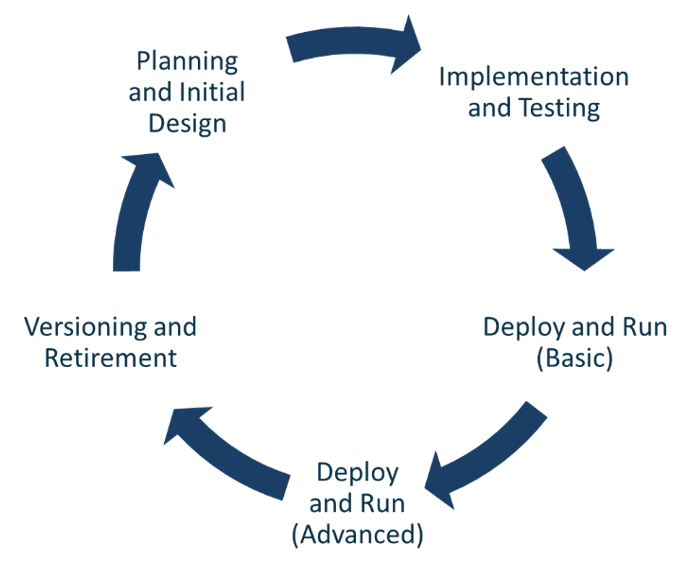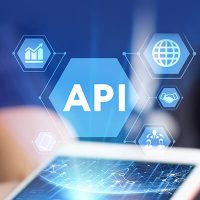What is API Full Lifecycle Management?

APIs are subject to a lifecycle – the so-called API lifecycle. What phases do APIs go through during their lifecycle? Why should they be documented and what does professional API Full Lifecycle Management involve? What phases do APIs go through during their lifecycle? Why should they be documented and what does professional API Full Lifecycle Management involve?
The more APIs a company provides and the larger the circle of users, the more helpful it is to manage APIs with full lifecycle management. It provides a holistic view of the management of all APIs. The entire process from designing and publishing an API to the end of its life is called the API lifecycle. The API lifecycle must be managed, documented, and made available to all API stakeholders who use the APIs.
What is API Full Lifecycle Management? The Challenges
After explaining in detail what API integration and API management is all about, API full lifecycle management represents the control and monitoring of APIs over their entire lifecycle. Thus it is to be understood as maxim of the API management approach. In order to meet this challenge professionally and future-oriented, there are different providers on the market:
APIs must be made available for both direct use and use by third-party developers to ensure a high adoption rate and extensive usage. They must meet the following requirements:
- APIs must be created very quickly.
- APIs must be controlled through:
- Managing an API catalog
- Ensuring a high level of safety
API management provides a holistic view of the different phases in the life of an API, from creation to retirement.
However, when it comes to APIs and applications, the term “management” is often misunderstood. Some speak of “management” as if it were a dashboard, a graphical user interface that helps manage the API. More specifically, however, this is about the entire lifecycle of API usage and existence.
Governance of the API Lifecycle:
API full lifecycle management keeps track of the entire resource inventory. This forms the uniform reference framework for the main phases or milestones of the lifecycle of an API service.
The organization of roles, responsibilities and processes is key to good governance. Depending on the level of knowledge within your company, the execution of these tasks can be distributed among one or more persons.
The 5 Phases of the API Lifecycle:
The analyst firm Gartner proposes the following five phases to define the API Lifecycle:

Planning and Design
In the first phase, the design of the API is drafted. The function of the API is defined and the user interaction is discussed. In this phase we also discuss topics such as API security, authentication and roles. Another important aspect is the expected volume and roll-out strategy.
Implementation and Testing
This phase deals with the API implementation and in most cases starts with a mock-up. The definition of tests and their automated execution is also part of this phase to detect problems early and debug them if necessary.
Deploy and Run (Basic)
The information regarding the API, such as documentation, tags and external documents, is transferred to the API catalog. Policies for mediation, traffic management and security are also defined. At the same time, the visibility of the API is controlled by the line of business.
Deploy and Run (Advanced)
Additional meta information is defined from the API and reports are generated regarding API monetization and business value (via adoption and consumption frequency).
Versioning and Retirement
On the basis of the collected data decisions can be made whether an API:
- Is deactivated
- Is extended / expanded
- Continues to operate without modification
At every stage of the API lifecycle, it is ensured that the application building blocks deliver the desired business results.
API lifecycle management accompanies an API from conception to delivery. It is essential for companies that want to provide relevant applications for a needy market.
| According to Global API Management Market Analysis & Forecast 2014 – 2024 Global API Management Market Analysis & Forecast 2014 – 2024 of finance.yahoo.com the global API management market value in 2018 stood at 1.1 billion U.S. dollars. For the period 2019 – 2024, a compound annual growth rate (CAGR) of over 22% is forecast, which corresponds to a global API management market value in 2024 of 3.6 billion US dollars, more than three times as much as in 2018. |
You want to gather more information about APIs & security? Read our Blogs API Security – Protect Confidential Company Data, Authentication and Authorization of API Calls or API Gateway Security
Thank you for your message
We appreciate your interest in SEEBURGER
Get in contact with us:
Please enter details about your project in the message section so we can direct your inquiry to the right consultant.
Written by: Thomas Kamper
Thomas Kamper, SVP Strategic Product Management, is responsible for strategic product initiatives related to all SEEBURGER’s business integration technology and solutions. The focus is currently on API solutions and Big Data. In addition, he is responsible for solutions that enable organizations to master challenges of visibility and to control the proper execution of digitalized business processes. Thomas rejoined SEEBURGER December 2017. Before, he worked for many years as a hands-on interim manager and business advisor supporting C-level executives within software and cloud service providers to make their strategic product initiatives successful.





